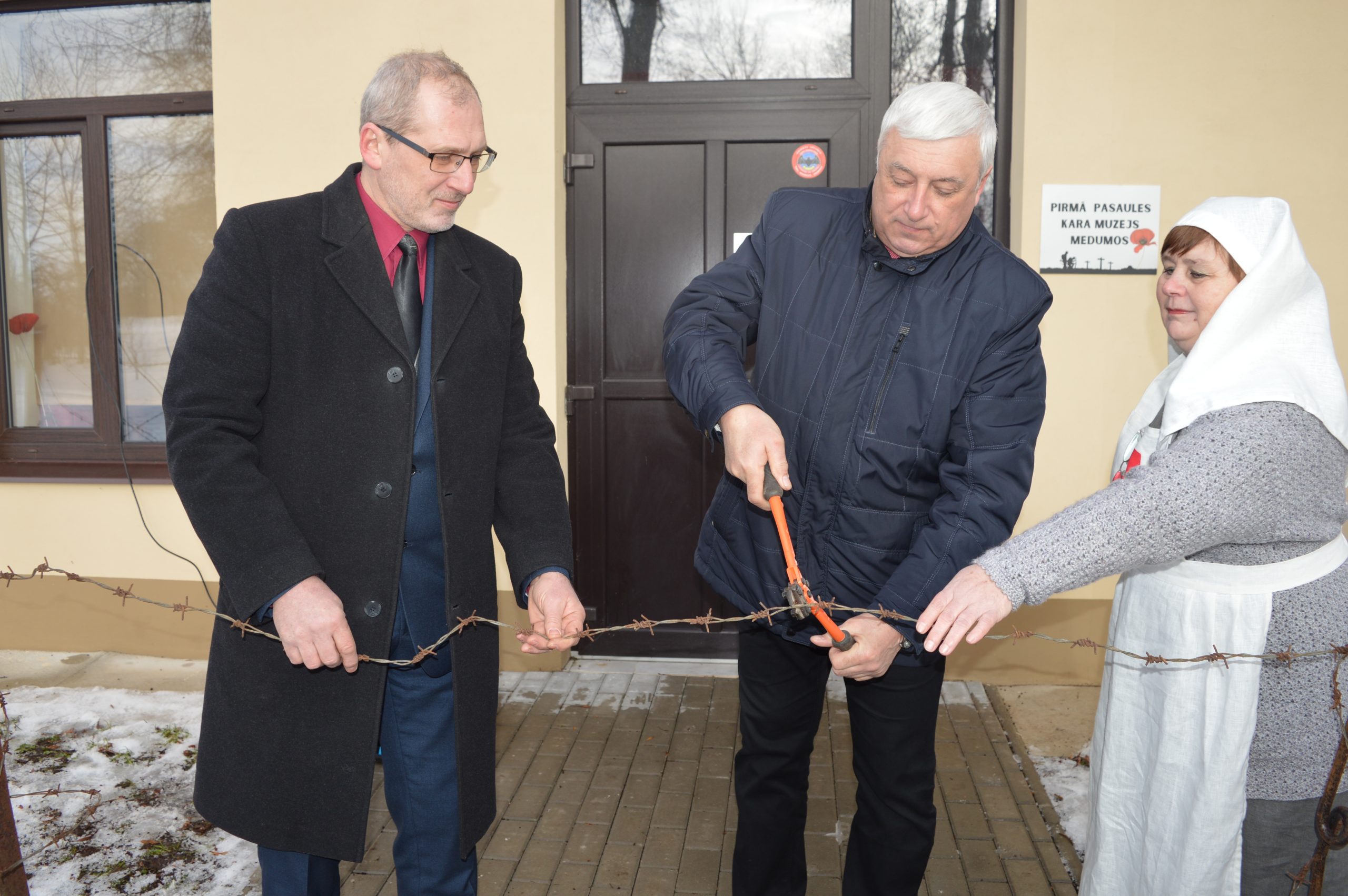
After two years of planning, design, collecting of artifacts – the newly created World War I Museum was opened to visitors. The project was implemented by the INTERREG V-A Latvian-Lithuanian Cross-Border Cooperation Program.
The museum features three exhibition halls. In the first hall, visitors are first introduced to the history of Medumi to show that life has been blushed here even before the war. The second hall tells the story of the First World War, its impact on the life of local parishes, the damage caused by the war, can get a little into the everyday life of soldiers – what they ate and drank, how and what they fought, how they entertained at the time of rest. Therefore, in the third hall of the Medumu Museum, there is a chance to get into the situation from the point of view of the Russian army, from their bunkers and trenches. This hall is the most emotionally impressive and touching. There are shots and explosions in the background, but scenes from the feature film “Blizzard of Souls” are shown on the screen, letting the tingles present and putting tears in the eyes. On the other hand, there is a chance to get into the German army bunkers outside of museum, some have partially restored mode of life. As an additional service, there is an opportunity to order lunches close to the battlefield and bicycle rent.
The museum was created in a building where the workshops of Medumu Elementary School used to be. The building had not been managed for a long time and was in poor condition. The building was renovated. Both the museum signboard and the front door in the barbed wire vase have red poppies that symbolize the souls of the fallen soldiers.
During the First World War, there was a line “Life and Death” in the territory of Latvia and Lithuania for several years. On both sides, a complex fortification system with trenches and bunkers was built. Thousands of soldiers fought here and fell in fierce battles, as evidenced by countless burials of fallen soldiers. In the forests of Demene, Svente and Medumu parish, Augsdaugava district, there are many German soldiers’ concrete bunkers, impressive cannon and ammunition sheds, and endless trenches.
During the project, the World War I also had an exhibition in Turmant in Lithuania, which will open its doors to visitors on March 17.